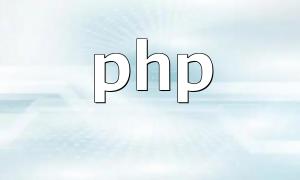PHP is one of the most popular server-side scripting languages, and its performance is closely tied to how it manages memory. Understanding how PHP allocates and frees memory helps developers write more efficient and scalable applications.
As an interpreted language, PHP dynamically allocates memory at runtime to store variables, objects, and functions. The Zend Memory Manager handles memory allocation, deallocation, and garbage collection. A solid grasp of how it works is key to writing high-performance PHP applications.
In PHP, memory allocation is handled automatically. When a variable is declared and assigned a value, PHP dynamically allocates the required amount of memory based on its type and content. For example:
$var = "Hello World";Here, PHP allocates memory depending on the length of the string. For complex data types like arrays or objects, it also allocates memory to store their structure and data.
PHP automatically frees up memory through its built-in garbage collection mechanism. When a variable is no longer referenced, PHP will eventually release its memory. Developers can also manually unset variables to encourage faster cleanup:
$var = "Hello World";
unset($var);Using unset() helps remove variables that are no longer needed, improving overall memory efficiency.
Once you understand how memory works in PHP, you can apply several strategies to boost performance and reduce resource usage.
PHP provides multiple data structures such as arrays, linked lists, and stacks. Choosing the most appropriate one for your task improves efficiency. For example, linked lists can perform better than arrays when frequent insertions or deletions are required.
// Using an array
$arr = array(1, 2, 3, 4, 5);
unset($arr[2]); // Remove element at index 2
// Using a linked list
$list = new SplDoublyLinkedList();
$list->push(1);
$list->push(2);
$list->push(3);
$list->offsetUnset(1); // Remove element at index 1Constantly allocating and freeing memory can cause fragmentation and slow down execution. You can use an object pool to reuse objects instead of repeatedly creating and destroying them.
class ObjectPool {
private $pool = array();
public function getObject() {
if (!empty($this->pool)) {
return array_pop($this->pool);
}
return new SomeObject();
}
public function releaseObject($obj) {
$this->pool[] = $obj;
}
}Caching is one of the most effective ways to speed up PHP applications. By storing expensive computation results or database queries, you avoid repeating the same operations.
function expensiveCalculation($key) {
$result = getFromCache($key);
if ($result === null) {
$result = performCalculation();
setToCache($key, $result);
}
return $result;
}Implementing systems like Memcached or Redis can drastically reduce server load and response time.
PHP’s built-in functions are implemented in C, making them faster than equivalent PHP code. When possible, prefer built-in functions to custom loops or logic. For instance:
// Custom implementation
function myMap($arr, $function) {
$result = array();
foreach ($arr as $item) {
$result[] = $function($item);
}
return $result;
}
// Built-in function
$result = array_map($function, $arr);Using functions like array_map() improves execution speed and keeps code clean and concise.
Understanding PHP’s memory management is fundamental to writing efficient and scalable code. By applying techniques such as memory reuse, caching, and optimal data structure selection, developers can significantly improve performance. Combining these insights with PHP’s built-in optimization tools ensures stable and high-performing web applications.









